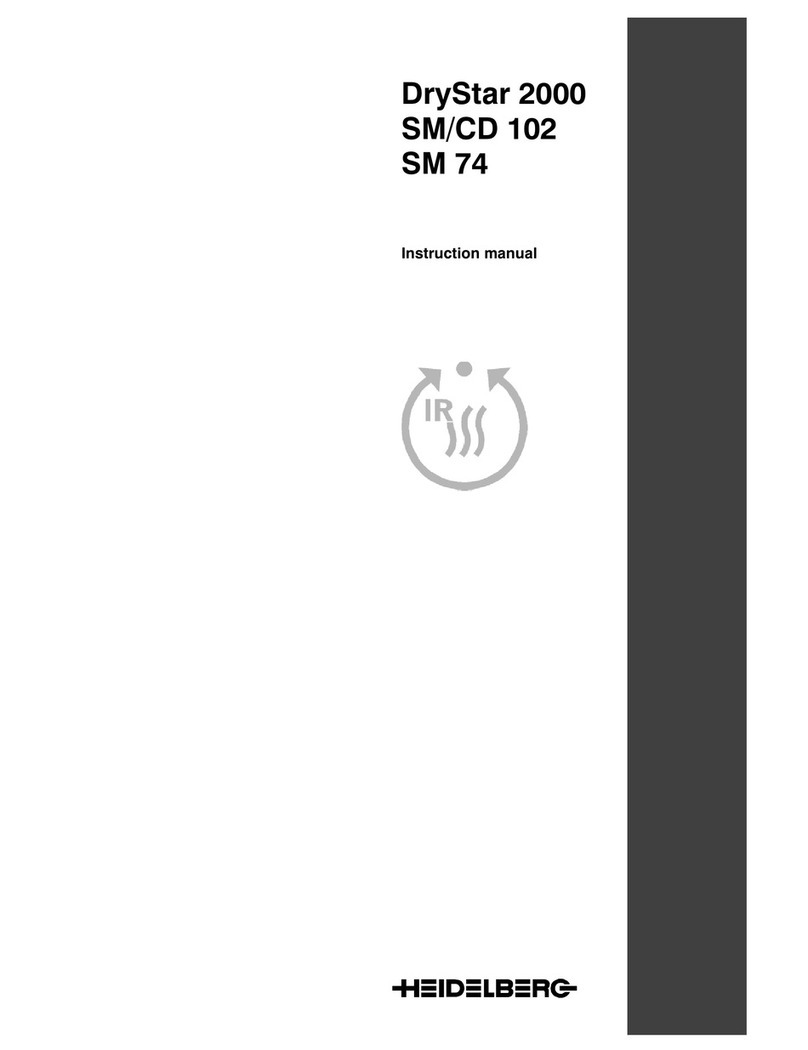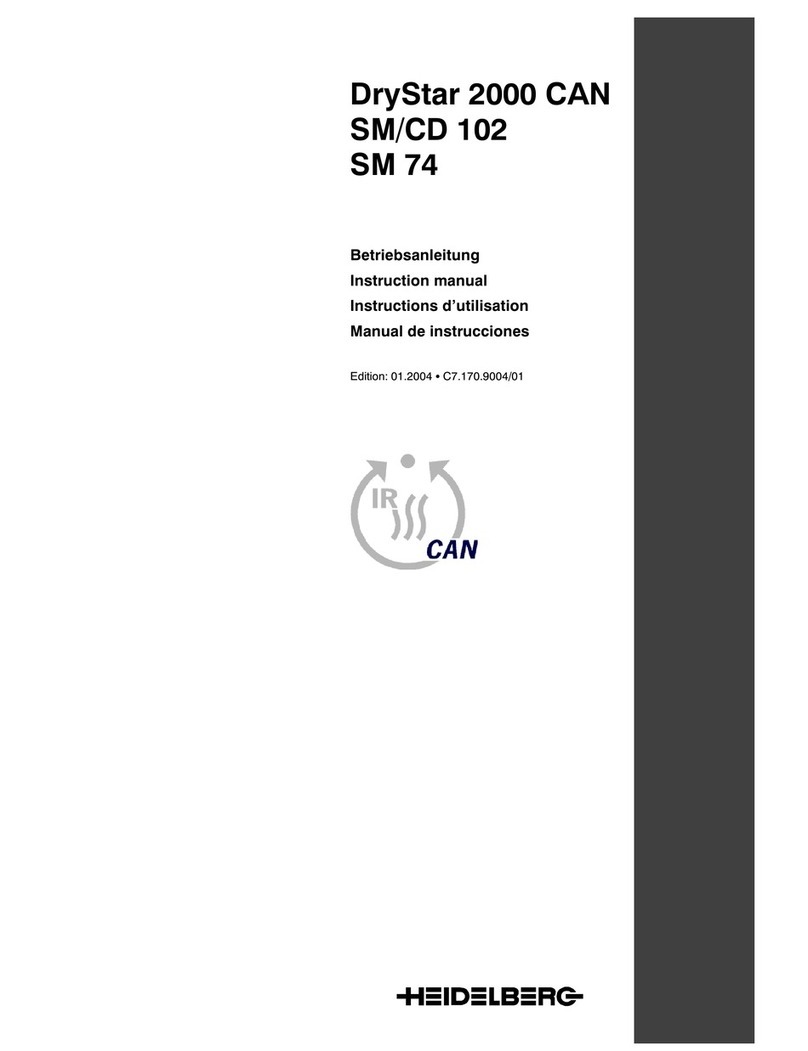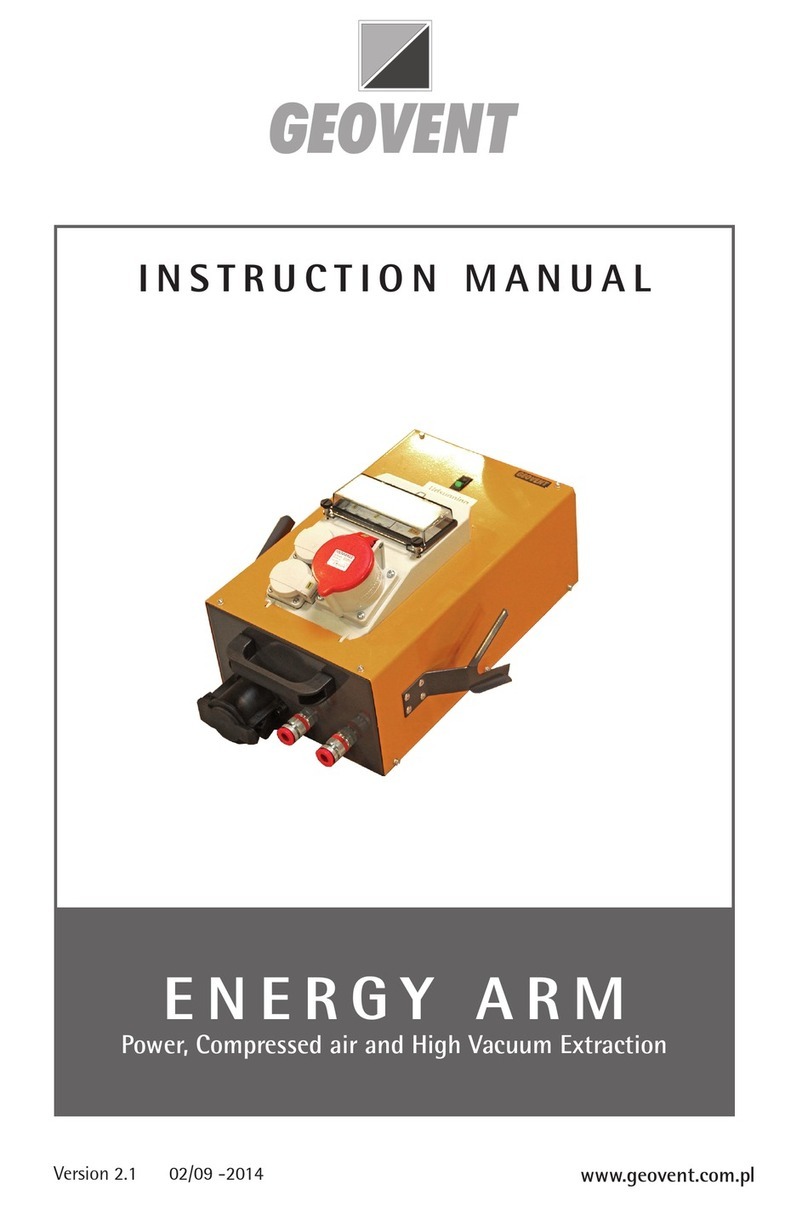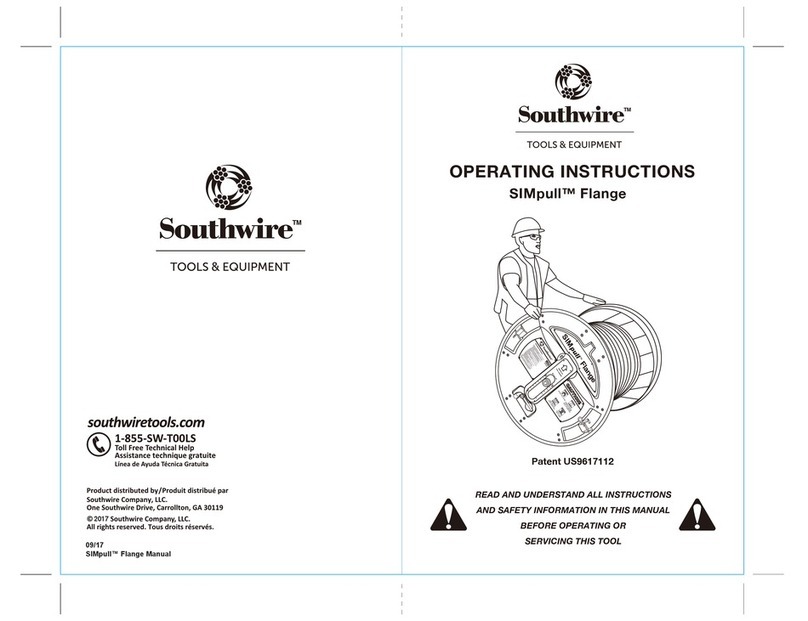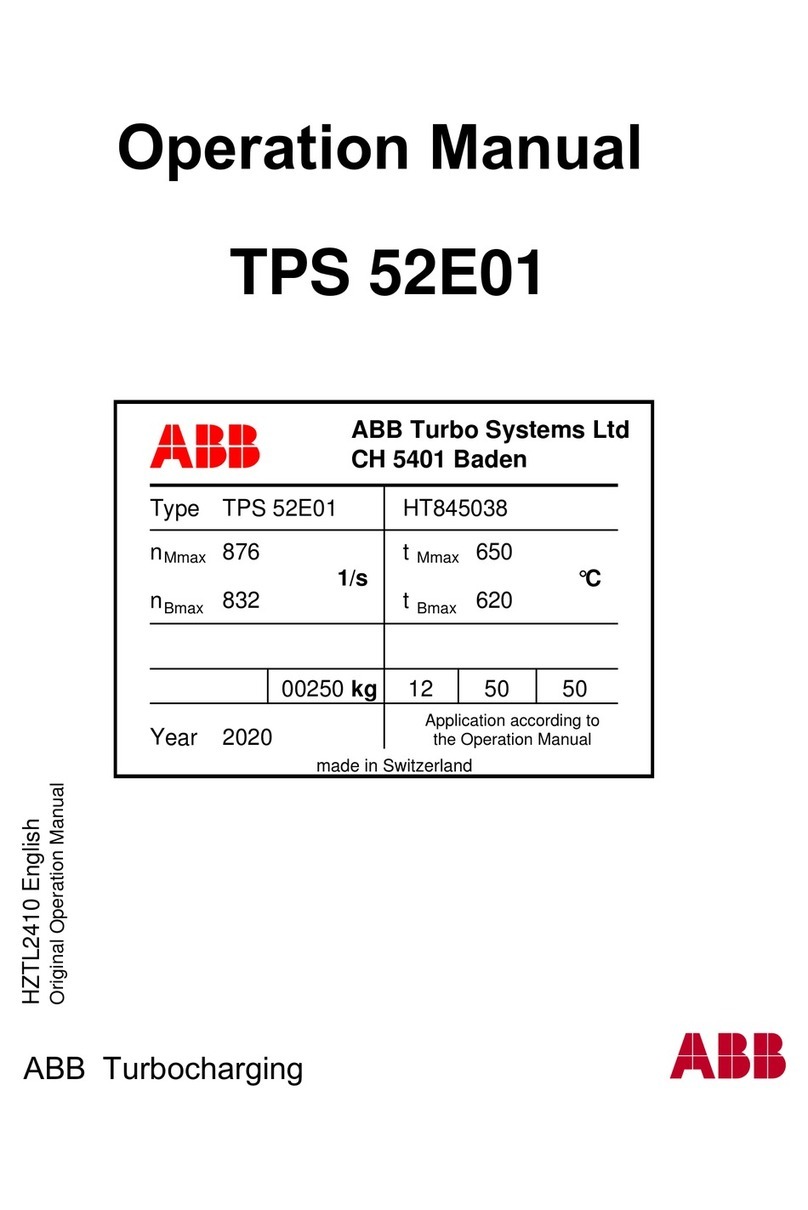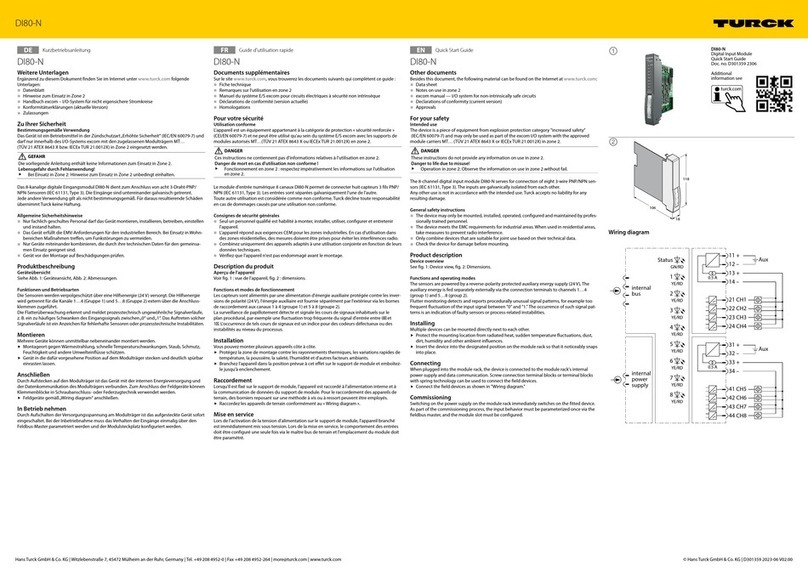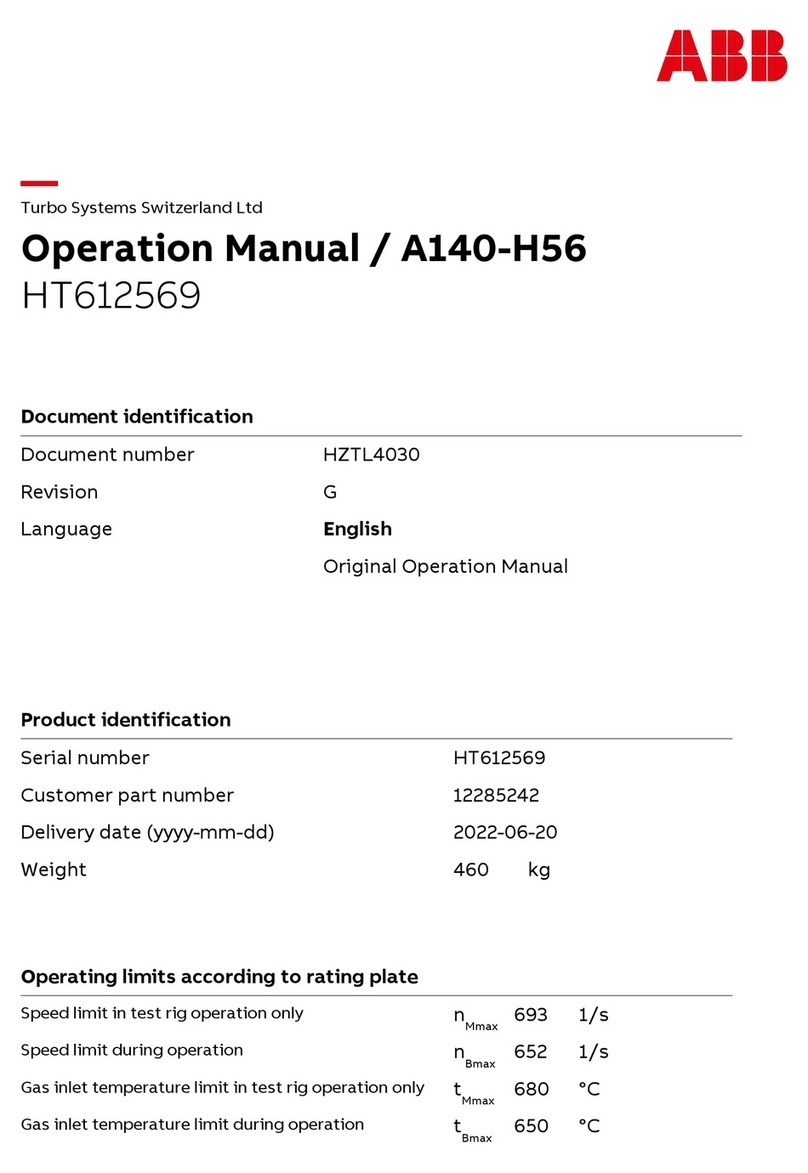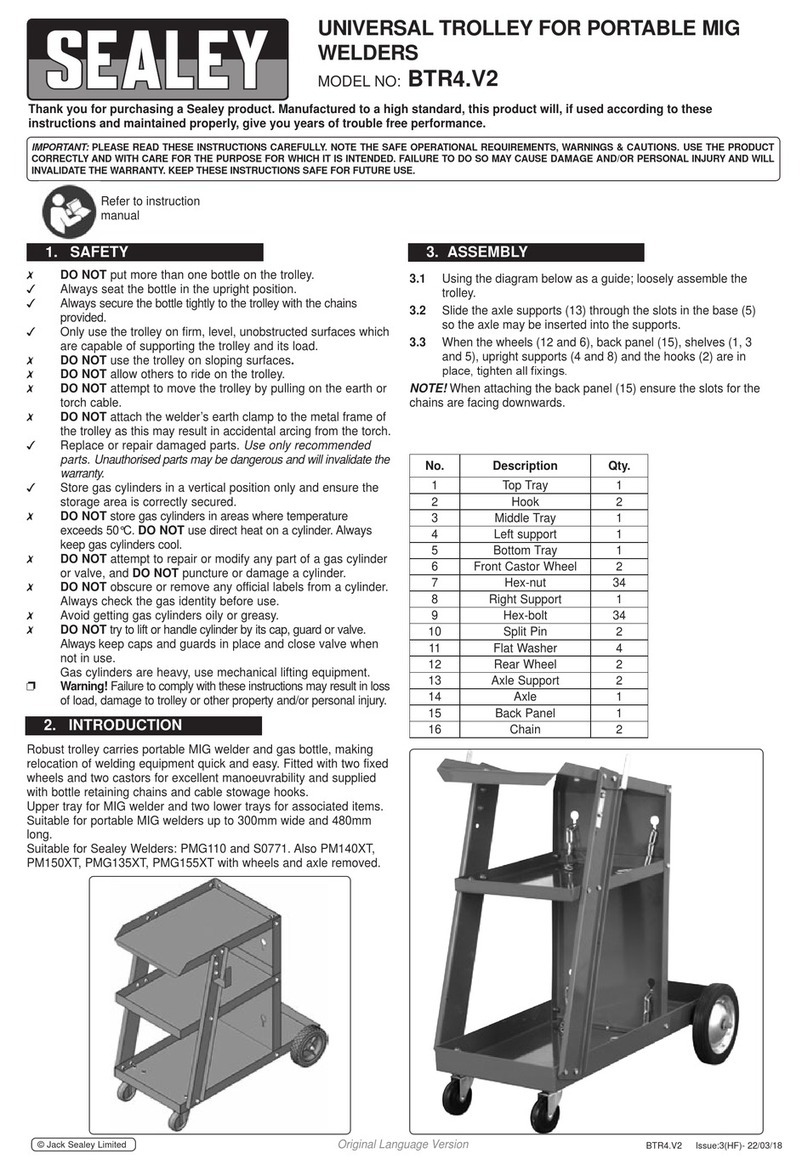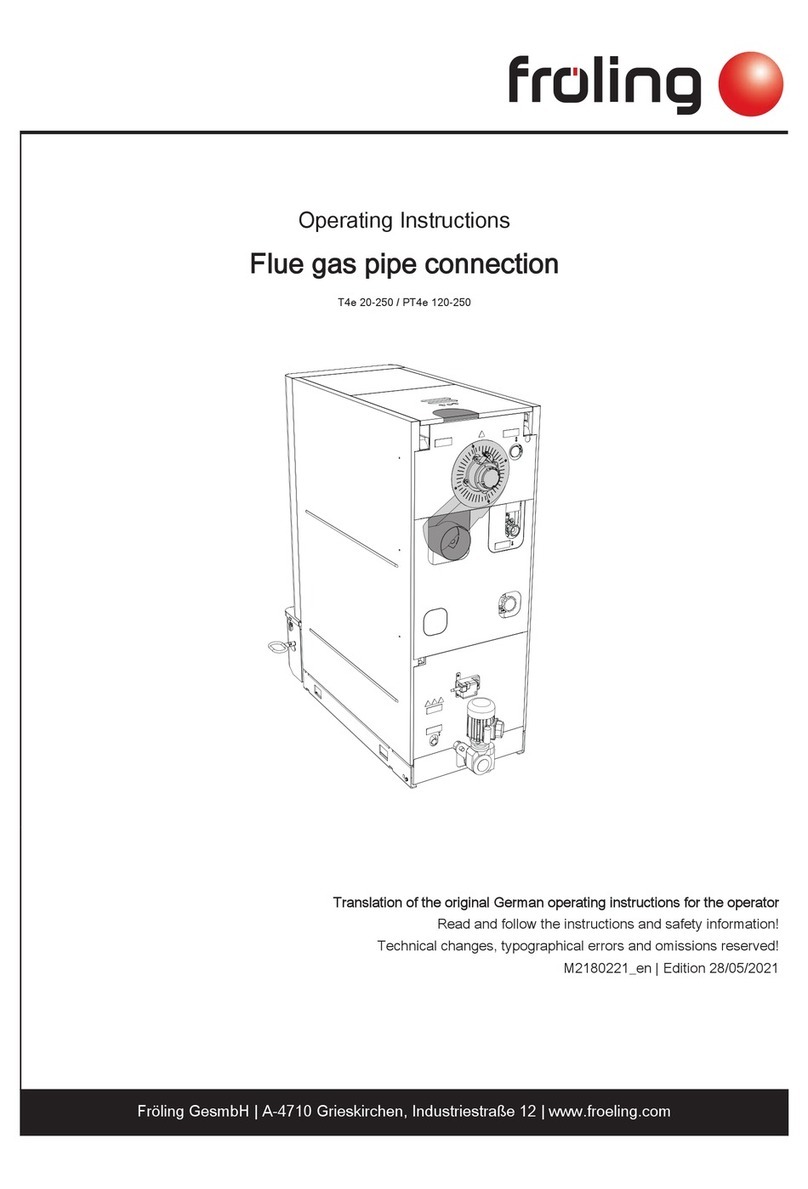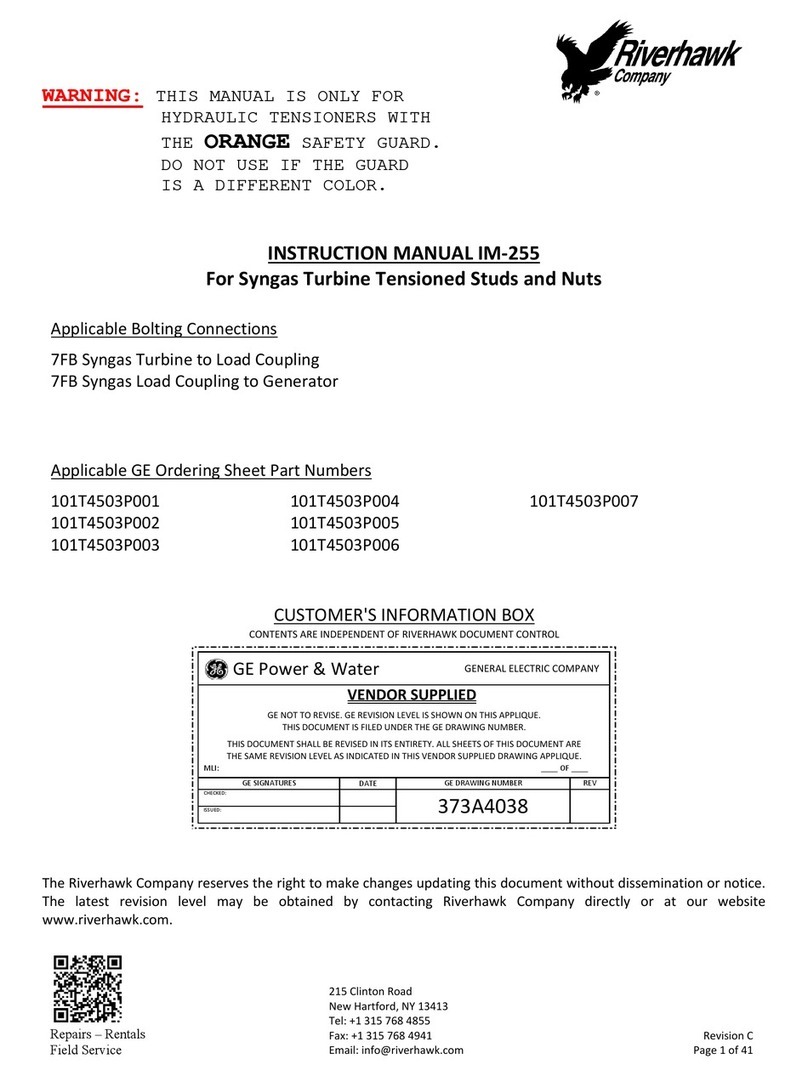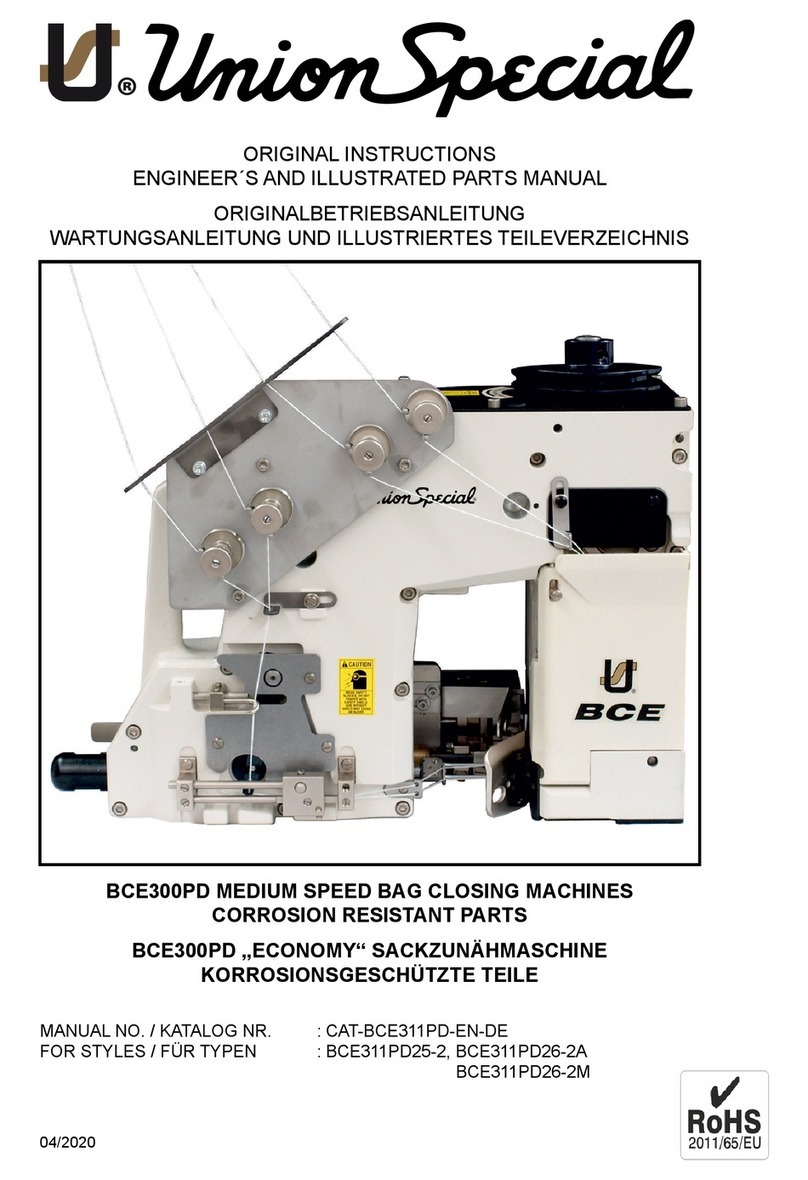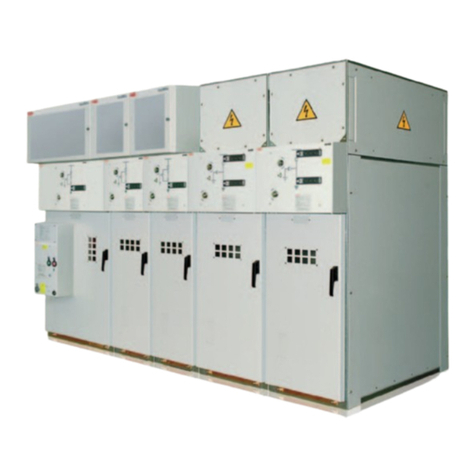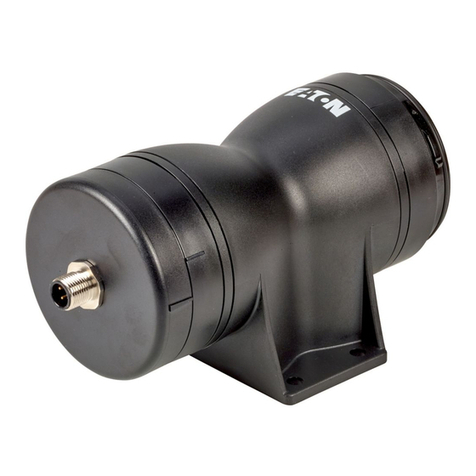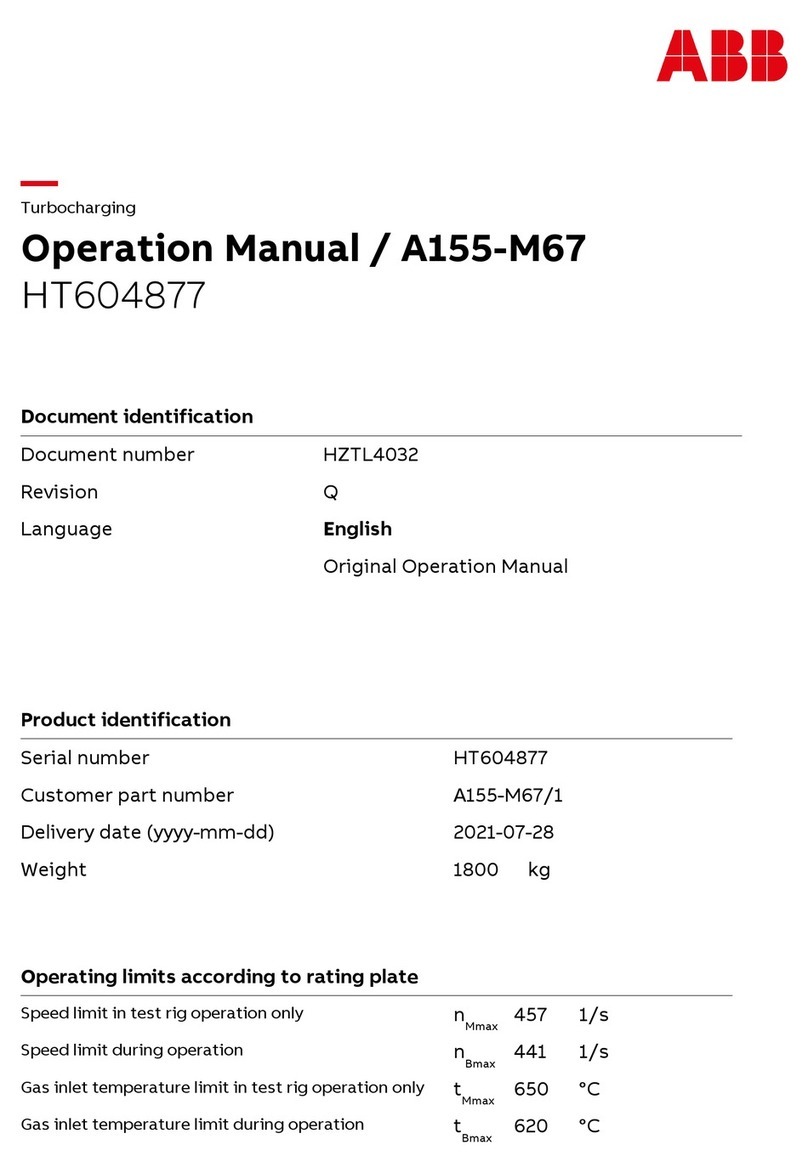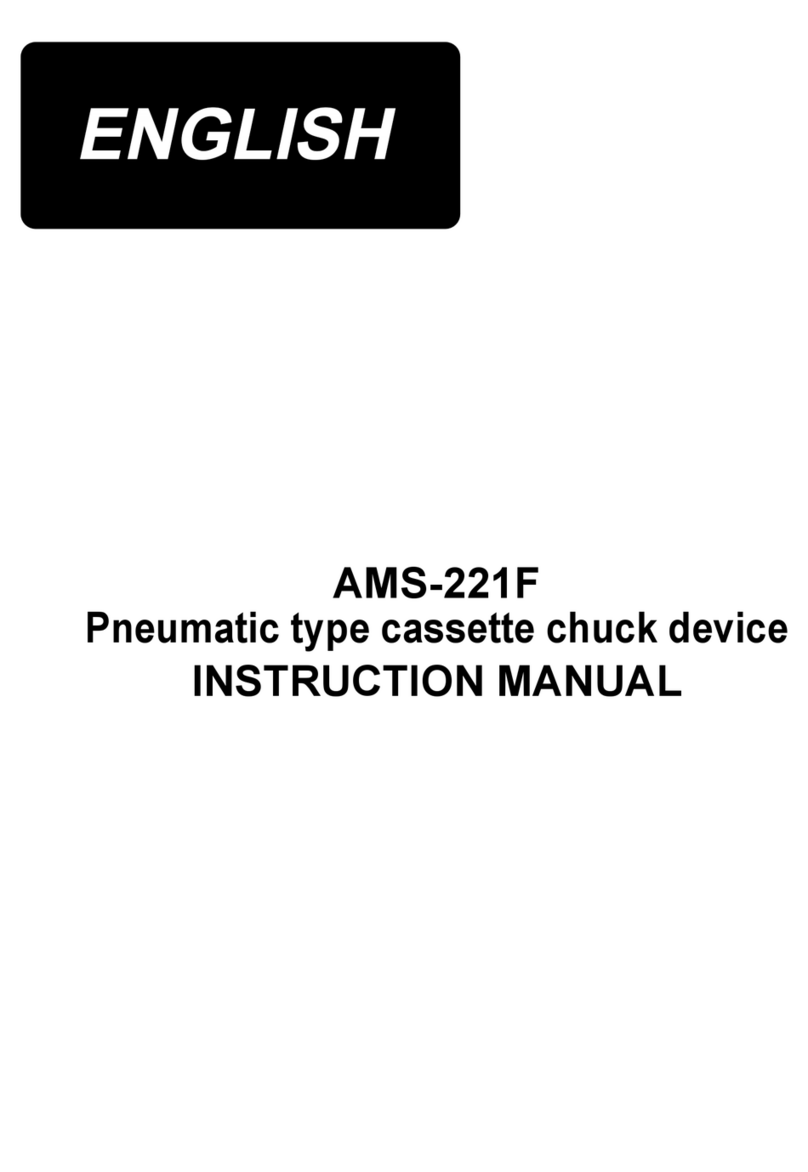HEIDELBERG Wallbox Installation instructions

Wallbox Energy Control, eng
Safety instructions
00.999.3046/


A Safety instructions
Safety instructions ........................................................................................................................ A.1.1
1 Wallbox Energy Control safety instructions .............................................................................. A.1.1
1.1 Note to the owner and operator of the charging system ................................................ A.1.1
1.2 Intended use .................................................................................................................. A.1.1
1.3 Notes for people with a pacemaker (PM) or implantable cardioverter defibrillator (ICD) A.1.3
1.4 Working on the charging system without risk ................................................................. A.1.3
1.5 Installation and tests ...................................................................................................... A.1.4
1.6 Specifications ................................................................................................................. A.1.6
1.7 Protective devices .......................................................................................................... A.1.7
1.8 Front illumination and blocking device ........................................................................... A.1.8
1.9 Declaration of Conformity .............................................................................................. A.1.8
Main chapter overview
00.999.3046/ A. 1

Main chapter overview
A. 2 00.999.3046/

Safety instructions
1 Wallbox Energy Control safety instructions
1.1 Note to the owner and operator of the charging system
● Read the operating manual before starting up the
charging system.
● Ensure that all persons working on or using this
charging system
○ have read the operating manual,
○ follow the regulations and instructions for
working without risk.
● Keep the equipment documentation at a location
where it is always accessible to the operators of
the charging system.
● Ensure that no unauthorized persons can access
the charging system.
1.2 Intended use
The charging system is intended for use in private and
semiprivate areas, e.g. private properties, corporate
parking areas, or depots.
Do not use the charging system where explosive or
combustible substances (e.g. gases, liquids, or dusts)
are stored or are present.
The charging system is intended exclusively for charg‐
ing electric vehicles.
● Charging in accordance with type 3 of IEC
61851-1
● Plug-and-socket connectors in accordance with
IEC 62196
● The charging system is intended for use only in
TT, TN-C, and TN-C-S networks. The charging
system must not be operated in IT networks.
The charging system is not suitable for charging vehi‐
cles with outgassing batteries (e.g. lead-acid batter‐
ies).
The charging system is intended exclusively for sta‐
tionary installation.
The charging system may only be operated and used
by persons who have read the operating manual.
The electrical installation, start-up, and maintenance
of the charging system may only be performed by
qualified electricians who have been correspondingly
authorized by the operator.
The qualified electricians must have read and under‐
stood the equipment documentation and must comply
with its instructions.
Requirements regarding the qualification of electri‐
cians
Knowledge of and compliance with the 5 safety rules
for working with electrical installations:
WB.000.3002-000UTKENU_02
Safety instructions
00.999.3046/ A.1.1

- isolate.
- secure against reactivation.
- check absence of voltage.
- ground and short-circuit.
- cover or block off live parts in the vicinity.
Reactivation is carried out in reverse order.
● Knowledge of the general and special safety reg‐
ulations and accident prevention regulations.
● Knowledge of the relevant electrotechnical regu‐
lations e.g. checks associated with commission‐
ing and the requirements for operating facilities,
rooms, and special types of equipment - power
supply for electric vehicles.
● Ability to recognize risks and to avoid potential
hazards.
When installing and handling the charging system, the
user, the operator, and the electrician must comply
with the national regulations on safety and accident
prevention.
Improper use and non-compliance with the operating
manual may jeopardize:
● your life
● your health
● charging system and vehicle.
Safety devices on the charging system
● must not be removed,
● must not be manipulated,
● must not be bypassed,
● before each use, it must be checked that the
equipment (e.g. housing, connecting line, charg‐
ing coupler) is undamaged,
● must be repaired or replaced as necessary, in
order to preserve the functional properties.
Ensure that:
● safety identifications, e.g. yellow-colored marks,
● danger signs and
● safety lights
remain easily visible and retain their effectiveness.
● When operating the charging system, do not use
any extension cables, cable reels, multisocket
power strips, or travel adapters.
● Do not insert any objects into the charging cou‐
pler of the charging system.
● Protect the socket-outlets and plug-in connec‐
tions against moisture and water or other liquids.
● Never immerse the charging system or the charg‐
ing coupler in water or other liquids.
● Do not disconnect the charging coupler from the
vehicle during charging.
Safety instructions
A.1.2 00.999.3046/

Heidelberg takes responsibility only of the charging
system in its delivered condition and for any work per‐
formed by skilled Heidelberg personnel.
1.3 Notes for people with a pacemaker (PM) or implantable cardioverter defibrillator (ICD)
Charging systems from Heidelberg that are operated
as intended, comply with the European guideline on
electromagnetic compatibility regarding radiated inter‐
ference.
Should people with a pacemaker (PM) or implantable
cardioverter defibrillator (ICD) wish to conduct activi‐
ties on charging systems and their devices in the in‐
tended manner, Heidelberg is not in a position to make
any statement regarding the suitability of such medial
devices. Heidelberg is not able to assess the pace‐
makers or concerned implantable cardioverter defib‐
rillators with regard to their susceptibility to electro‐
magnetic radiation. This is something that only the
manufacturers of the pacemaker or implantable car‐
dioverter defibrillator can do.
Heidelberg therefore recommends only allowing the
people in question to work on its charging systems af‐
ter consultation with the manufacturer of the pace‐
maker/defibrillator and the relevant insurance compa‐
ny. Ensure at all times that no health or safety risks are
involved.
Note
People with a pacemaker or defibrillator
may not work on or stand near the charg‐
ing systems and their devices, e.g. to
perform maintenance operations or rec‐
tify any faults.
1.4 Working on the charging system without risk
Before plugging the charging coupler into the vehicle
● The connecting line of the charging system must
be completely unwound.
● Check whether the housing of the charging sys‐
tem, the connecting line, the charging coupler,
and the connectors are undamaged.
● Take hold of the plug-in connection of the charg‐
ing system only on the charging coupler and not
on the charging cable.
● Ensure that no-one can trip e.g. over the charging
cable.
During the charging process
● Keep unauthorized persons away from the
charging system.
● When the charging system is connected, you
must not clean or wash the vehicle with a high-
Safety instructions
00.999.3046/ A.1.3

pressure cleaner because the plug-in connection
is not sealed against pressurized water.
In case of malfunctions or failure of the charging sys‐
tem
●Disconnect the charging system from the power
supply by switching off the respective circuit
breaker in the building. Leave a sign with the
name of the person authorized to switch on the
circuit breaker.
● Call in a qualified electrician immediately.
Electrical devices
● The housing of the charging system must always
be kept closed.
1.5 Installation and tests
Information for selecting protective devices for basic
and fault protection against touching directly or indi‐
rectly
●Electrical circuit breakers
The charging system must be protected with circuit
breakers in compliance with the respective national
regulations. This depends, for example, on the re‐
quired tripping time, internal network resistance, con‐
ductor cross-section, conductor lengths, and the pre‐
set rating of the charging system.
The short-circuit protection of the conductor must have
a characteristic that permits 8-10-fold of the Inom value
and must not exceed a maximum nominal current of
16 A, depending on the preset rating of the charging
system.
●Residual-current circuit breaker
For reasons of personal safety, national regulations
may stipulate an upstream RCD with an I∆N of
30 mA AC. Choose a suitable RCD that complies with
the national regulations. Heed also the notes from the
section
DC residual current detection
.
●DC residual-current detection
The charging system is equipped with 6 mA DC resid‐
ual-current detection. The charging system switches
itself off if there is a residual current that is greater than
or equal to 6 mA DC. Details of this are given in the
Diagnostics
section.
Information on initial inspections after installation and
repeat inspections
National regulations may stipulate inspections of the
charging system before start-up and at regular inter‐
vals. Perform these inspections in accordance with the
Safety instructions
A.1.4 00.999.3046/

respective rules and regulations. Information is given
below on how these inspections can be performed.
●PE conductor test
After the installation and before switching on for the
first time, test the continuity of the PE conductor. For
this, connect the charging coupler to a test adapter for
vehicle simulation in accordance with EN 61581-1.
Measure the resistance of the PE conductor between
the PE conductor socket of the adapter and the con‐
nection point of the PE conductor in the building's
electrical cabinet. The value of the PE conductor for a
total conductor length (connecting line to the charging
system and the vehicle charging cable) of up to 5 m
must not exceed 300 mΩ. For longer cables, the value
can be increased in accordance with the applicable
national regulations. In any case, the resistance must
not exceed a value of 1 Ω.
●Insulation test
Two insulation measurements are required because
the charging system is equipped with a disconnecting
relay. The charging system must be disconnected
from the power supply for this. Therefore, before the
measurement, switch off the supply voltage using the
circuit breaker in the building's electrical cabinet.
1. Measurement of the primary side of the charging
system.
Measure the insulation resistance on the primary side
of the charging system at the connection point of the
power supply line to the charging system in the build‐
ing's electrical cabinet. The value must not exceed
1 MΩ.
Note
The Wallbox has a surge protector. This
may be considered in the course of mak‐
ing measurements.
2. Measurement of the secondary side of the charging
system.
For this, connect the charging coupler to a test adapter
for vehicle simulation in accordance with EN 61581-1.
Measure the insulation via the measuring sockets on
the test adapter. The value must not exceed 1 MΩ.
Alternatively, the differential current method can be
used in conjunction with measurement of the PE con‐
ductor current. In both cases, the value must not ex‐
ceed 3.5 mA. For these measurements, connect the
charging coupler to a test adapter for vehicle simula‐
tion in accordance with EN 61581-1. The measure‐
ments must be carried out with the adapter in the C
mode. Measure the differential current at the connec‐
tion point of the power supply line to the charging sys‐
tem in the building's electrical cabinet.
Safety instructions
00.999.3046/ A.1.5

●Test of the power-off condition in case of a short-
circuit (ZL-N)
For these measurements, connect the charging cou‐
pler to a test adapter for vehicle simulation in accor‐
dance with EN 61581-1. The measurements must be
carried out with the adapter in the C mode. Carry out
the measurements on the measuring sockets of the
test adapter. The values must comply with those of the
selected circuit breaker.
●Test of the power-off condition in case of a fault
(ZL-PE)
For these measurements, connect the charging cou‐
pler to a test adapter for vehicle simulation in accor‐
dance with EN 61581-1. The measurements must be
carried out with the adapter in the C mode. Carry out
the measurements on the measuring sockets of the
test adapter with a suitable instrument. The values
must comply with those of the selected circuit breaker.
●Test of the integrated DC residual-current detec‐
tion
For these measurements, connect the charging cou‐
pler to a test adapter for vehicle simulation in accor‐
dance with EN 61581-1. The measurements must be
carried out with the adapter in the C mode. Carry out
the measurements on the measuring sockets of the
test adapter with a suitable instrument. If the residual
current is greater than 6 mA DC, the charging system
must disconnect the charging coupler from the power
supply. The fault indicator on the charging system
must be activated.
●Test of the upstream RCD
The upstream RCD has to be checked at the connec‐
tion point of the charging system supply in the build‐
ing's electrical cabinet. The RCD must trip in accor‐
dance with the national regulations.
1.6 Specifications
Designation Technical specifications
Regulations IEC 61851-1; IEC61439-7
Charging capacity type 3 up to 11 kW
Nominal voltage 230 V / 400 V / 1/3 AC
Nominal current up to 16 A
adjustable from 6 A to 16 A in 2 A increments
Nominal frequency 50 Hz
Data interface RS485
Charging connection/charging coupler Type 2
Length of charging cable 5 m or 7.5 m
Status information Front illumination
Safety instructions
A.1.6 00.999.3046/

Designation Technical specifications
Protection rating IP54
Residual current detection DC 6 mA
Ambient temperature -25 °C to +40 °C
Ventilation No ventilation required
Protection class I
Overvoltage category III
Dimensions (HxWxDx) 386 mm x 295 mm x 112 mm
Weight approx. 8 kg
Tab. 1
1.7 Protective devices
3
4
2
1
FS.110.0373-000GRAUND_01
Fig. 1 Charging system
The following components are protective devices:
1Housing
2Charging cable
3Protective cover
4Charging coupler
Checking the protective devices
1. Before every charging process, make a visual in‐
spection of the protective devices for damage.
2. Have a qualified electrician make regular electri‐
cal function tests in accordance with the national
regulations.
Safety instructions
00.999.3046/ A.1.7

1.8 Front illumination and blocking device
12
WB.000.0003-000GRAUND_00
Fig. 2 Heidelberg Wallbox Energy Control
1Front illumination
2Nameplate
Front illumination
The front illumination indicates the operating state of
the charging system. Detailed information on the op‐
erating states is given in the operating manual.
Optional external blocking device
If an external blocking device (e.g. key switch) is con‐
nected, the charging process is only started when the
Wallbox has been enabled by the external blocking
device.
1.9 Declaration of Conformity
The Declaration of Conformity and the CE marking on
the product are valid for the following EU Member
States:
Austria, Belgium, Bulgaria, Croatia, Cyprus, Czech
Republic, Denmark, Estonia, Finland, France, Ger‐
many, Greece, Hungary, Ireland, Italy, Latvia, Lithua‐
nia, Luxembourg, Malta, Netherlands, Poland, Portu‐
gal, Romania, Slovakia, Slovenia, Spain, Sweden,
United Kingdom
Safety instructions
A.1.8 00.999.3046/

Wallbox Energy Control
FS.110.0374-000GRAUND_01
Fig. 3 Declaration of Conformity
Safety instructions
00.999.3046/ A.1.9

LS KE 01012020 Rücks.doc
WB.000.0019-000GRAUND_00
Fig. 4
Safety instructions
A.1.10 00.999.3046/

WB.000.0020-000GRAUND_00
Fig. 5
Safety instructions
00.999.3046/ A.1.11

WB.000.0021-000GRAUND_00
Fig. 6
Safety instructions
A.1.12 00.999.3046/
Table of contents
Other HEIDELBERG Industrial Equipment manuals
